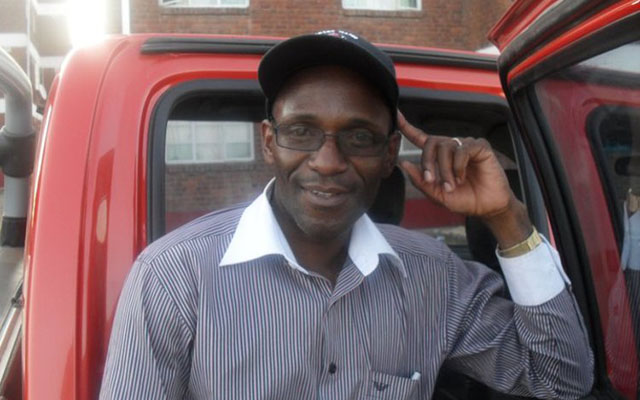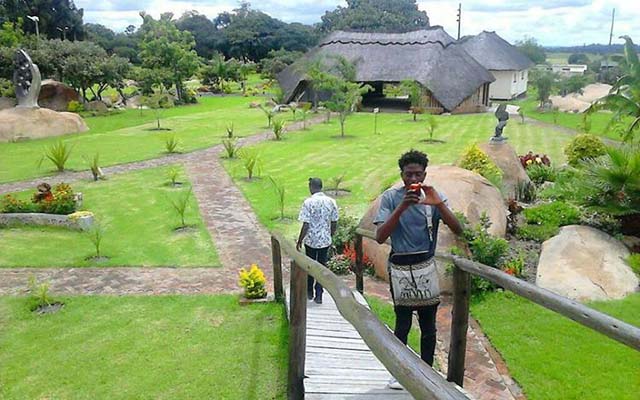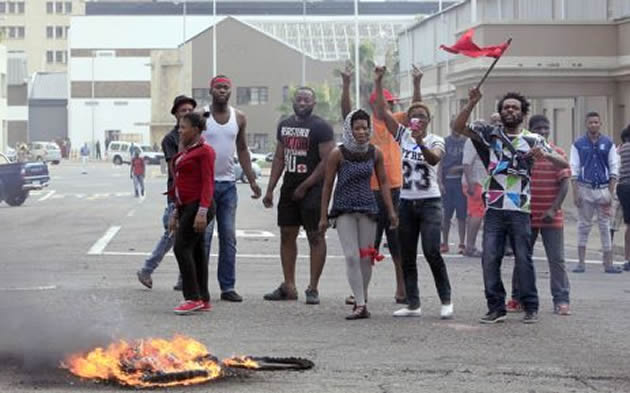‘Harare water meets WHO guidelines’


ENGINEER HOSIAH CHISANGO . . . “Further to water supply improvements, we expect a marked reduction in operational costs as we will have new equipment which is energy efficient and less prone to breakdowns”
Christopher Farai Charamba THE INTERVIEW
The year 2016 saw Harare residents periodically going without water. Repairs to the Morton Jaffray Water Treatment Plant meant that water supplies had to be cut off for a few days at a time. Christopher Charamba (CC) spoke to acting Harare Water director Engineer Hosiah Chisango (HC), who explained the current state of water supplies in Harare and what it would take to rehabilitate and expand the supply network to cover all the city’s residential areas.
CC: It was reported recently that the City of Harare needs $1,6 billion to repair the water works. Could you expand on how this figure has come about and why it has taken so long for repairs and rehabilitation to take place for us to get to the point where we need $1,6 billion to repair the water system?
HC: The $1,6 billion is not just repair but it is also rehabilitation and expansion of the water systems. We haven’t been able to upgrade our systems for close to 20 years because of what we have gone through in the country due to the economy.
There have not been any meaningful replacements or rehabilitations. At the same time, we have seen our population growing.
What we are saying is we need to bring back the installed capacity to full functionality. From there we will go on to expand the system to ensure that we will cover all the new areas that are coming up.
You will notice that there are areas like Caledonia, the southern areas, Hopley, Whitecliffe as well as Harare North which include the expansions in Hatcliffe.
They are quite large expanses of land where people have taken occupation and obviously these need water service.
So to get to the $1,6 billion, we are already using $144 million for the rehabilitation of Morton Jaffray. From there we need to do extensive replacement of the water mains to reduce losses and also to make sure that more water gets to the people.
Harare requires $670 million for the rehabilitation and upgrade of pipelines, pump stations and reservoirs. Our network is about 5 000km. We need to replace it using that money. That will take a period of about five years to complete.
But in the meantime we also need to start looking at new treatment works such as the Kunzvi scheme that we have been eyeing to increase water into the city. About $600 million is required for the implementation of the Kunzvi Water Scheme.
It is being handled by the Ministry of Environment, Water and Climate.
That then takes your figure to $1,6 billion. It’s over a period of eight years to do that work if we start now.
CC: Where are the funds for this rehabilitation and expansion programme going to be sourced from and if it’s taking a period of eight years to complete, what happens to water supplies for the city between now and then?
HC: The eight-year period is a construction and rehabilitation period. We are already doing that work and there is progressive increase in water supplies into the city. Once Morton Jaffray is done, the units that we do, we put them online and people start getting water. So there will be a progressive improvement of water supplies over the eight-year period.
We are looking at various sources of funds. We are also eyeing private sector finance. We have received money from the usual donors, the African Development Bank. The World Bank has also come in at various stages.
But what we want to do is see how we can tap into private sector financing. Water on its own is a business. We are saying come in and we rehabilitate the water works and we reduce losses. The money that we get from water reduction can go on to service the loans that we take for this financing.
CC: What viable options are there for people who don’t have water or servicing, especially in the new suburbs that you mentioned, such as Caledonia and Hopley? A lot of people out there are digging wells and when it rains heavily, as it did a few weeks ago, these collapse and their water source is left damaged and contaminated. What initiatives is the city carrying out to mitigate water woes?
HC: That one is a main challenge but what we have done is to engage development partners in the short term to put boreholes that we know can withstand these floods. That is taking place so that we can make safe water available for these people.
From an investment perspective though, we are saying it’s a market that we need to penetrate using financing we can get from the private sector and any other funding source we can get, to improve water supplies. We already know that the people to consume the water are there.
The main initiative the city is implementing besides infrastructure rehabilitation is the non-revenue water reduction programme. This is aimed at reducing water losses, improving the supply systems and increasing the service coverage.
There is resource mobilisation including engagement of the private sector to ensure implementation of all plans.
CC: Residents have endured a lot of Morton Jaffray shutdowns as the city implements the rehabilitation. How far have you gone with the programme and should residents brace for more shutdowns?
HC: Last year 2016, we had 10 complete plant shutdowns. These were requested by the contractors that are working on Morton Jaffray to enable them to install new plant and equipment.
There were major valves, pumps and pipework that needed replacement and over 90 percent of the work is now done at Morton Jaffray. All the major isolating valves are in place and we are now able to work on different sections of the plant with other sections running.
The outstanding major work that needs a shutdown is the replacement of valves at the intake works where we draw water from the lake. This will be done during a partial shutdown with water being drawn from Manyame Dam. Apart from this work, no major shutdown is anticipated except for routine cleaning of reservoirs and other facilities at the works.
The major works which entail refurbishment and modernisation of the Morton Jaffray Number 1 Works constructed in 1954 is now nearly complete and commissioning of the first section is scheduled for March 2017.
This will increase the production capacity by 60 megalitres per day. The current average water production in Harare is 460 million litres per day. So this will result in the water output increasing to 520 megalitres per day.
CC: How will this translate in terms of the water supplies for Harare residents? Will there still be areas that go without water for extended periods?
HC: The 520 megalitres per day will amount to 80 percent of the demand being met. This will guarantee 24/7 water supplies to the western and centre zones which cover all the western suburbs, the central business district and the industrial areas.
The service level to the north and eastern suburbs will significantly improve to minimum three days’ supplies per week. The current long dry spells will be reduced to no more than 36 hours.
Further to water supply improvements, we expect a marked reduction in operational costs as we will have new equipment which is energy efficient and less prone to breakdowns. Work is also planned for the replacement of parts of the distribution infrastructure to reduce water losses and increase water availability to the people.
The city’s residents should therefore expect marked improvements in water supplies and minimal water supply disruptions once the main rehabilitation works are complete.
CC: People have in the past complained about the quality of Harare’s water. What is your comment? Is the city’s water safe?
HC: The certification of drinking water as safe follows established guidelines and standards. Harare treats its water to World Health Organisation guidelines. The water that Harare produces meets the guidelines and we always ensure there is residual chlorine to kill any disease-causing organisms.
The general misgivings on the water quality relates to its physical appearance which is sometimes not appealing – the colour and odour though remain within the guidelines. This, however, does not make it unsafe for consumption since it meets the required guidelines.
The challenge for Harare is the raw water sources which are heavily polluted. Harare is currently refurbishing the treatment units and increasing filter depths to increase output volumes.
Standard monitoring of the water quality is done in the treatment as well as the distribution network, where chlorine levels are low. There is super-chlorination done at reservoirs to ensure safety of the water.










Comments